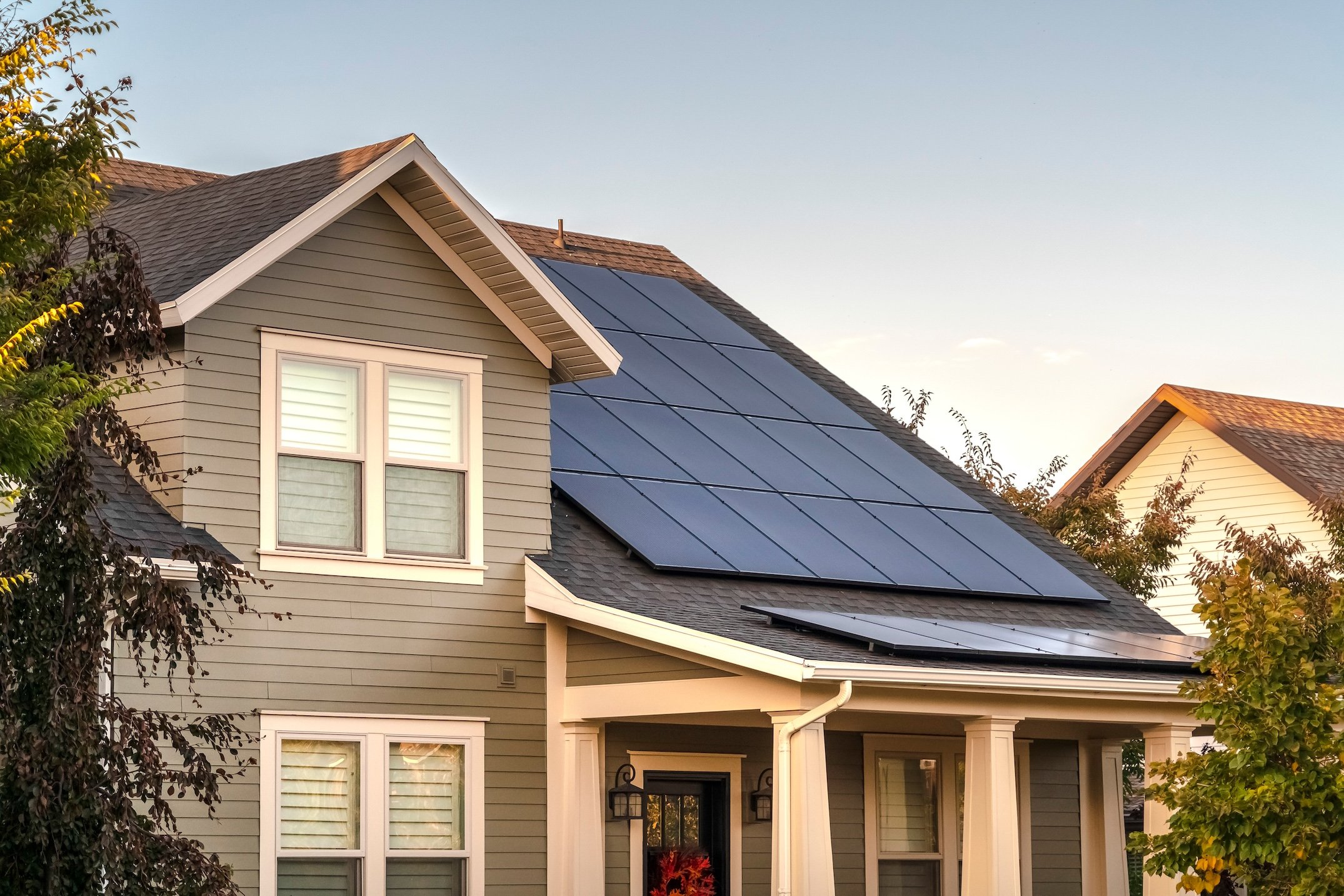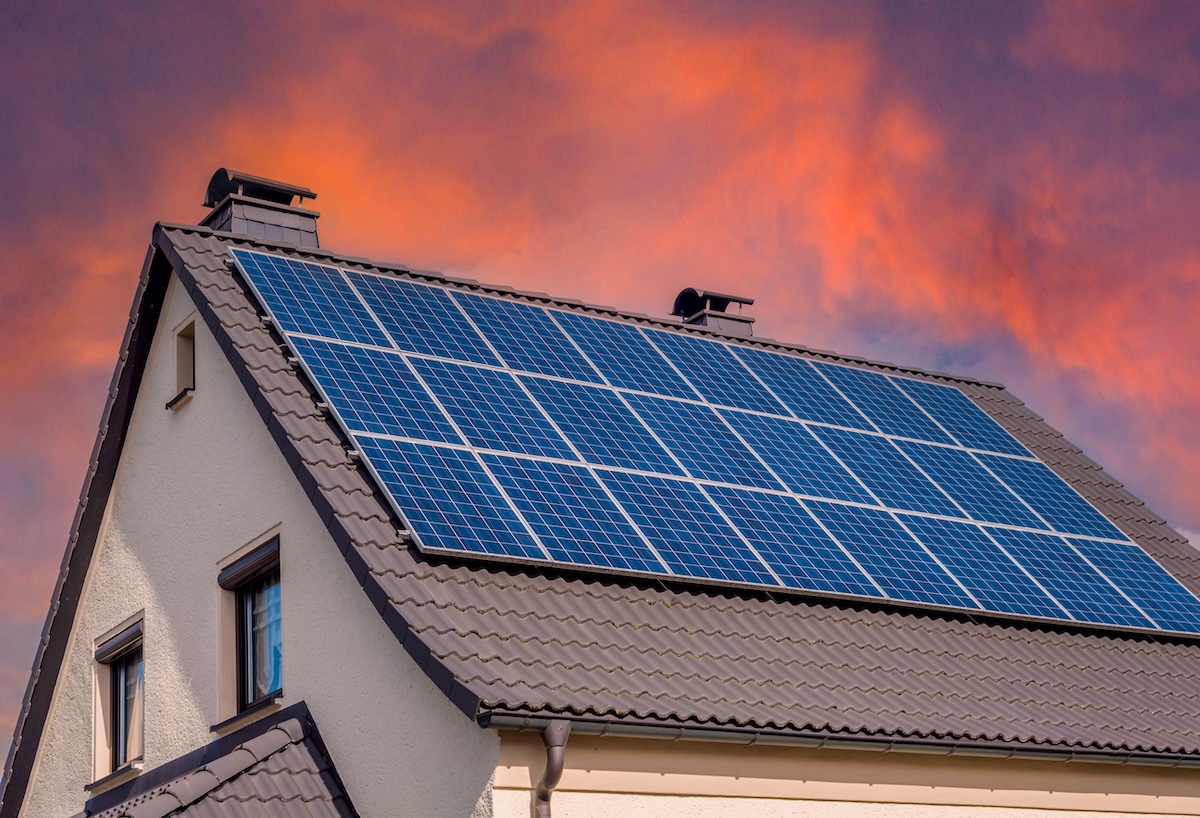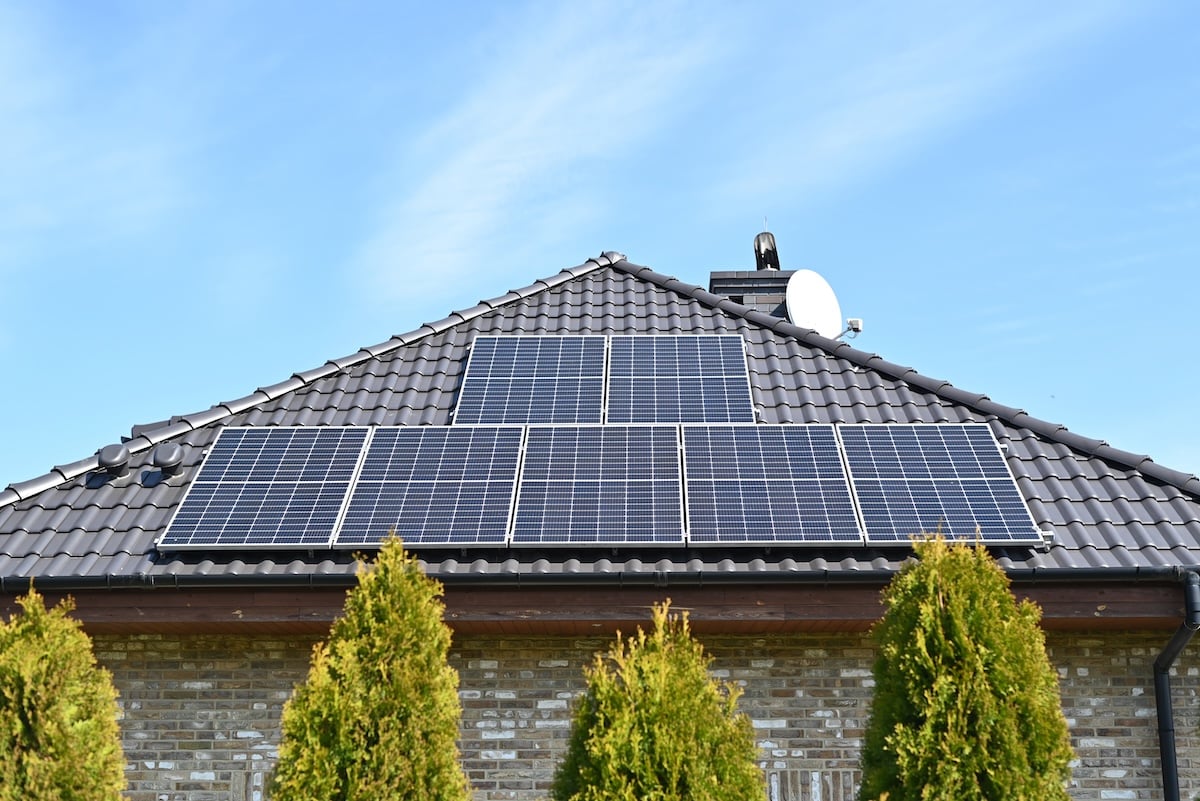Hail Damage Roof Inspection What to Look Out For
8 Min Read
POSTED 06.05.2025
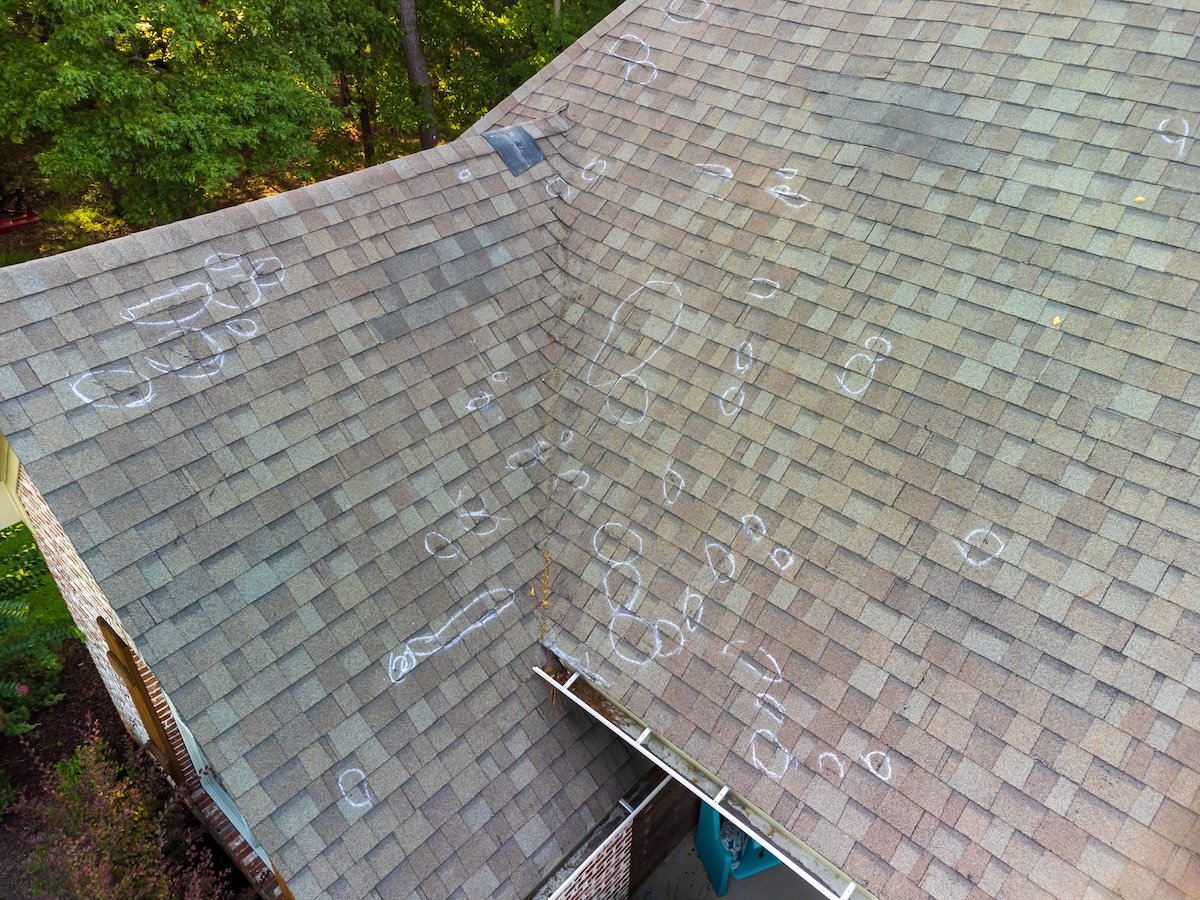
Hailstorms can be beautiful to watch, but their aftermath can leave significant damage to your home. Among the most vulnerable parts of your property during a hailstorm is your roof. The impact of hailstones can disrupt your roof’s functionality, leading to leaks, structural damage, or even costly repairs.
This guide will help you understand what to look for during a hail damage roof inspection, ensuring your home remains safe and secure. Here’s what we’ll cover in this post:
- Why inspecting for hail damage is important
- Common signs of hail damage on different roofing materials
- A step-by-step guide to inspecting your roof
🤔 Why You Need a Hail Damage Roof Inspection
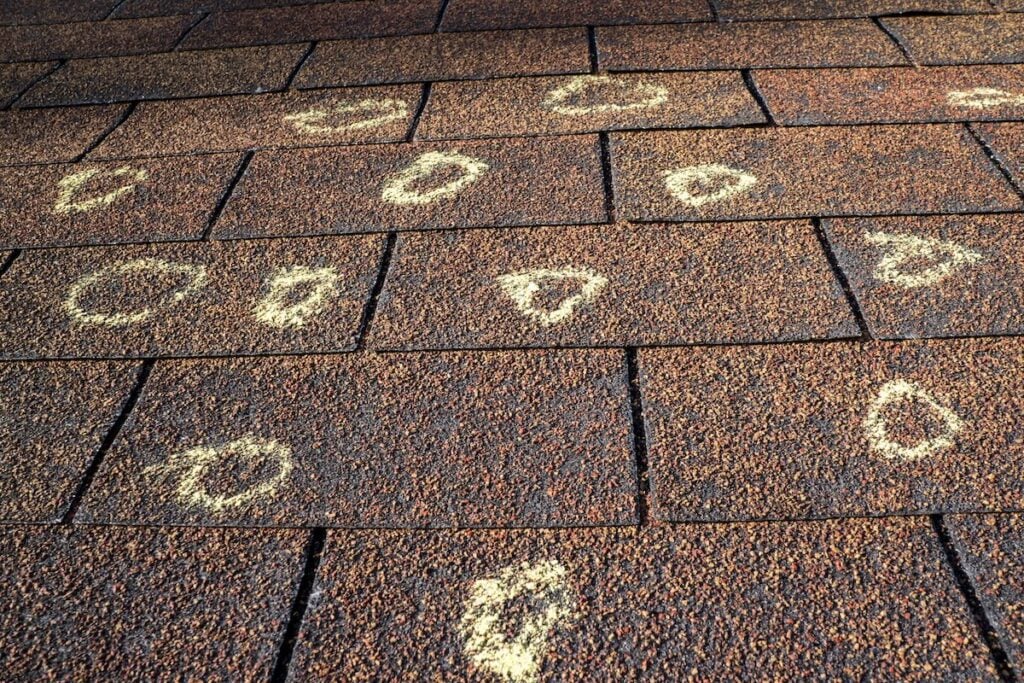
Hail damage, no matter how minor it may seem, should never be ignored. Over time, even small dents or cracks can lead to significant problems for your roof and your home. Damage to shingles, flashing, or the underlayment can allow moisture to seep through, leading to water damage, mold growth, and structural weakening. The longer you wait, the more costly these issues can become.
Scheduling a roof inspection after a hailstorm not only prevents long-term damage but can also make the insurance claims process much smoother. Identifying damage early gives you the evidence needed to file a claim, potentially saving you from expensive out-of-pocket repairs.
Key Reasons to Schedule an Inspection:
- Prevent hidden damage from worsening over time.
- Protect your home from leaks, mold, and structural issues.
- Ensure your roof’s integrity after severe weather.
- Simplify insurance claims with documented proof of damage.
- Save money by addressing issues early rather than waiting for costly repairs.
⚠️ 4 Signs of Hail Damage on Different Roof Types
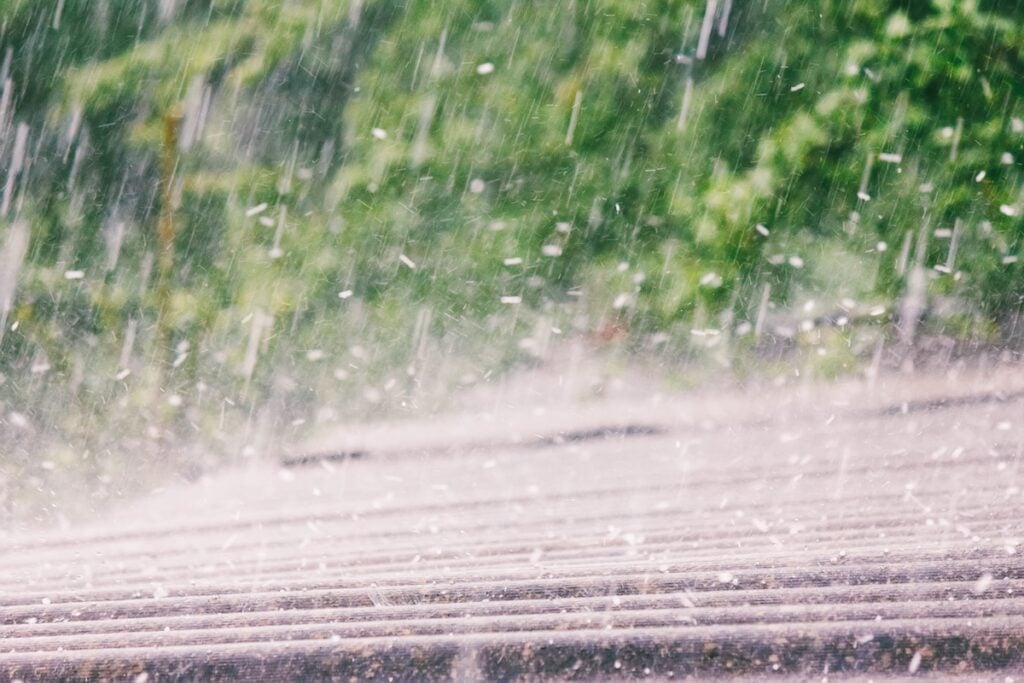
Different roofing materials sustain damage in various ways. Here’s how hail may affect common types of roofing materials:
1. Asphalt Shingles
Asphalt shingles are one of the most common roofing materials, but they are not immune to hail damage. When inspecting asphalt shingles for signs of impact, look for dents or pockmarks that may indicate where hailstones struck the surface. Missing granules are another common issue; these granules play a crucial role in protecting the shingles from UV rays, so their loss can significantly reduce the lifespan and effectiveness of the roof. You might notice bald spots where the protective coating is missing, leaving the shingles more exposed to the elements. Cracks or splitting in the surface of the shingles are another key indicator of hail damage. These cracks often occur when hailstones strike with enough force to compromise the structural integrity of the shingle, making it more prone to leaks and further deterioration. Regular maintenance and close inspections following storms are essential in identifying and addressing these issues before they escalate.
2. Metal Roofing
Metal roofing is known for its durability, but it can still sustain damage during hailstorms. One of the most obvious signs to look for is dents, which often resemble dimple-like marks scattered across the surface of the roof. These dents are typically more pronounced on thinner metal sheets or in areas of the roof that lack structural support. Pay close attention to seams and edges, as these are the weaker points of metal roofing and are more likely to sustain damage or become loosened due to the impact of hail. Additionally, while the reflective nature of metal roofs can sometimes make dents less noticeable, this same characteristic can amplify the effects of damage over time, especially if protective coatings are compromised. A closer, hands-on inspection might be needed to detect less visible dents or imperfections, and any damage should be addressed quickly to ensure the roof retains its protective qualities.
3. Wood Shakes or Shingles
Wood shakes or shingles offer a natural, rustic aesthetic, but they can be vulnerable to hail damage, particularly during severe storms. The most common type of damage caused by hail is splitting, which can occur when hailstones strike the wood with significant force. These splits can often be identified by their fresh, sharp edges, which are a clear sign of recent impact. In some cases, the splits might also radiate outwards, creating a spider-like pattern across the wood. Another indicator of hail damage is discoloration or scarring on the surface of the shakes or shingles. These marks may look like bruises or areas where the wood has been scraped or indented by hailstones. Discoloration may also become more pronounced over time as the wood weathers. A thorough inspection is essential to detect these less obvious signs of damage, as even minor splits or marks can lead to water infiltration, rot, or further deterioration if left unaddressed.
4. Tile Roofing
Tile roofing is a durable and long-lasting option for many homeowners, but it is not immune to damage from hail. Hailstorms can cause a range of issues, from small chips or cracks in individual tiles to more severe damage like complete shattering. Cracks can sometimes be subtle and difficult to spot during a quick visual inspection, so taking the time to thoroughly check each tile is crucial. Focus on areas where hailstones might strike with the greatest force, such as roof ridges or exposed edges. Larger hailstones, especially those coupled with strong winds, can cause tiles to break entirely, leaving gaps in the roof where water can seep through. Even minor damage, such as small chips, can compromise the integrity of the tiles over time, leading to leaks or structural weaknesses. Because tile roofs are often more expensive to repair or replace, identifying and addressing hail damage early can save significant costs down the line. Regular inspections following storms can help mitigate long-term issues and maintain the roof’s durability.
✅ 6 Steps to Performing a Hail Damage Roof Inspection
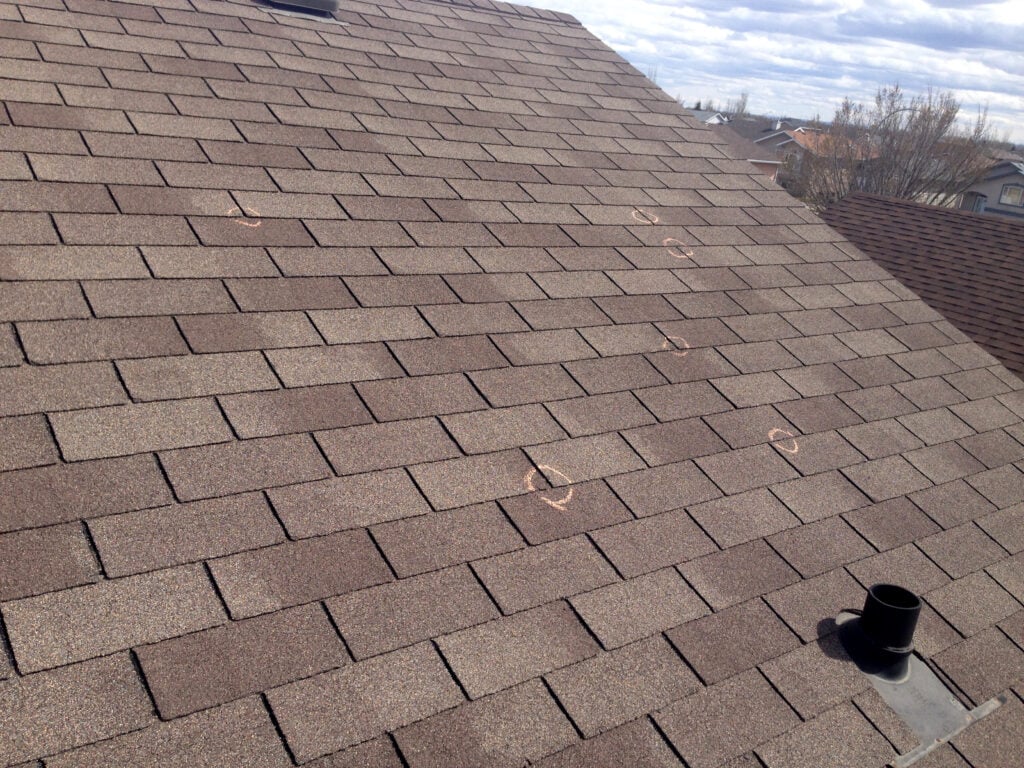
If you’re ready to inspect your roof yourself, follow these six steps to ensure you cover all critical areas. You’ll want to exercise extreme caution or hire a professional if you’re not comfortable with climbing to your roof.
Step 1: Check the Ground Perimeter
Before climbing up to inspect your roof, start by examining your home’s exterior for any noticeable signs of hail damage. Walk around and look for dented gutters, chipped or peeling paint, or shattered windows, as these could indicate the severity of the storm’s impact. You might also find pieces of broken roof materials, such as shingles or tiles, scattered across your yard, driveway, or near the foundation. These fallen materials can give you a clear idea of where to focus your roof inspection.
Step 2: Examine Gutters and Downspouts
Hail can leave behind dents, dings, or even small cracks in your gutters and downspouts. Carefully inspect these areas for visible damage caused by hailstone impacts. Damaged gutters are not just cosmetic concerns—they can compromise your home’s water drainage system, leading to improper water flow and potential leaks. Blocked or dented gutters may also cause water to pool around your foundation, which can lead to other structural issues over time.
Step 3: Look for Damaged Flashing
Flashing, the metal material used to seal roof edges and prevent water infiltration, is highly vulnerable to hail damage. Take a close look at flashing around critical areas such as chimneys, skylights, vents, or dormer windows. Check for dents, cracks, loosened edges, or any areas where the metal may have been punctured. Damaged flashing can leave your roof exposed to moisture and lead to water seepage if not repaired promptly.
Step 4: Inspect Shingles Carefully
Climb onto your roof (if it’s safe to do so) and examine the shingles closely for signs of damage. Look for bruising, soft spots, or areas where the shingles appear discolored or weakened. If shingles feel soft or spongy underfoot, it could indicate cracking or damage to the material beneath. This kind of damage can compromise the roof’s ability to protect your home, allowing water to seep into the structure and causing long-term problems if left untreated.
Step 5: Assess Your Roof’s Ventilation System
Roof vents can often show clear evidence of hail damage. Inspect the vent covers for dents, missing pieces, or cracks that might have been caused by hailstones. Be sure to check the seals and flashing around the vents as well, as hail can cause these areas to loosen or crack, leading to potential leaks. Damaged vents may also create issues with airflow, which can affect your home’s ventilation system.
Step 6: Check Inside Your Attic
While exterior damage is often the most obvious, it’s equally important to check for hidden issues inside your attic. Look for signs of water infiltration, such as leaks, damp spots, or water stains on the wooden beams or insulation. A compromised roof can allow moisture to penetrate the attic space, leading to mold growth and structural damage if not addressed quickly. Pay attention to any changes in the attic’s smell or feel, as these can also indicate water issues.
🏠 Hail Damage Inspection
When it comes to protecting your home after a hailstorm, you need a team you can trust. At Badgerland Exteriors, we combine expertise, top-notch service, and a commitment to customer satisfaction to ensure your roof is in the best hands. From uncovering hidden damage during detailed inspections to handling the insurance claims process and delivering high-quality repairs, we’re here to make the entire process stress-free.
Don’t leave your roof’s integrity to chance—contact Badgerland Exteriors today for a professional inspection and experience the difference of working with a trusted local team. Schedule your free inspection now!
Let’s Get Started
Fix Your Roof the Badger Way
Got a question? Want to learn more about your options when it comes to caring for your home exterior? Our team is standing by with the information you need to start you roof replacement project today!

